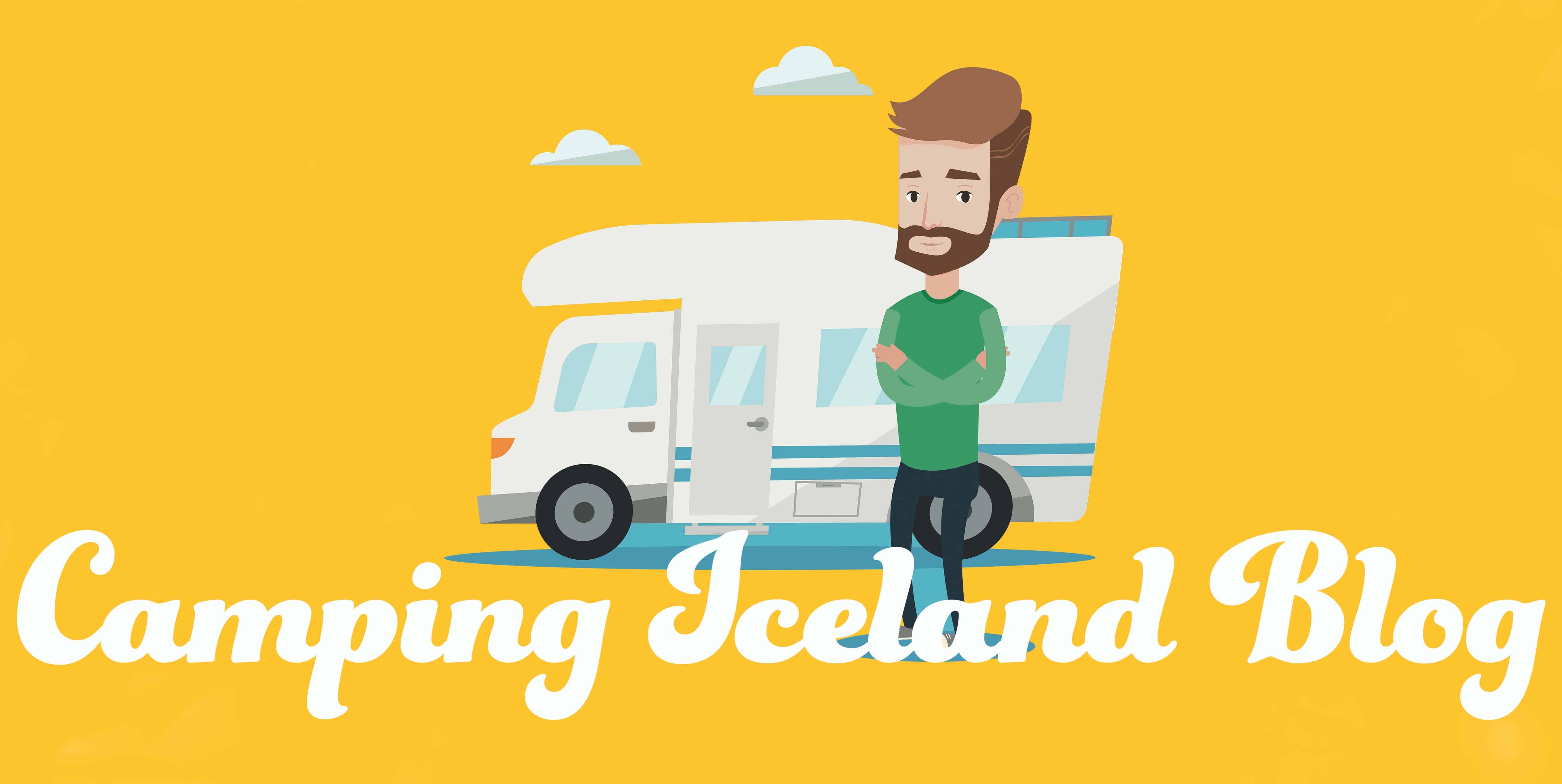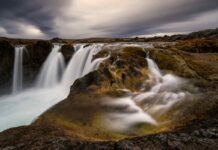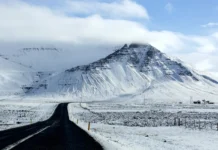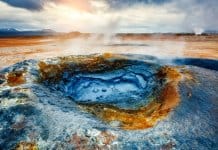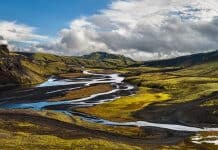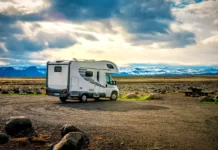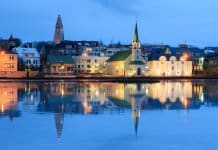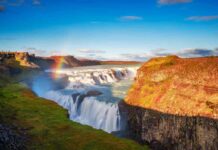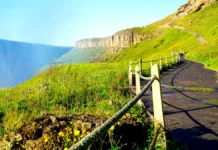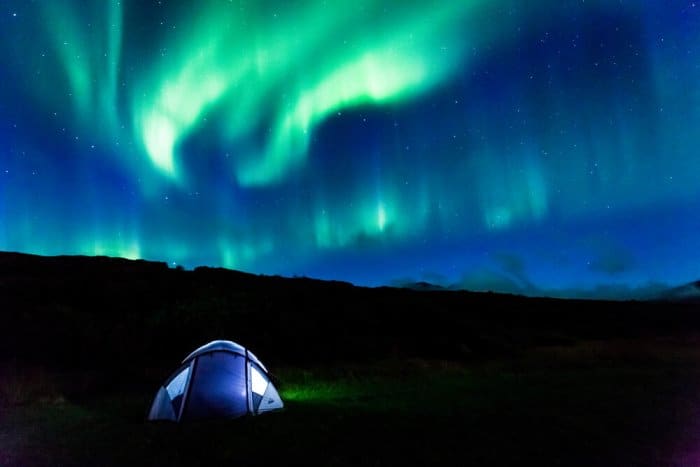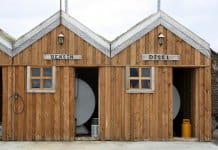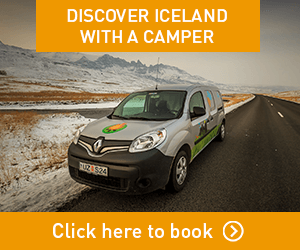When I say the word “camping”, what images come to mind? Tents set up in the forest with marshmallows roasting over an open fire? What about if you are traveling in an RV in the wilderness but there are no tents? Is it still camping if you are not technically sleeping outside or at least using a sleeping bag? While there is some debate, one thing is clear: many people have different definitions of what constitutes camping. Whether you crave traditional adventure camping with a backpack or prefer the luxuries of a motorhome or campervan, Iceland has something for everyone. And yes, that even includes mountain huts. Let’s look at the different types of camping in Iceland.

This is part two of our multi-part series on everything you need to know about camping in Iceland.
-
The Weather in Iceland Along with Average Temperatures
-
Types of Camping in Iceland, e.g. Tent Camping versus Renting a Campervan
-
What Equipment to Bring
-
Renting Camping Equipment in Iceland versus Bringing Your Own
-
All About Campsites in Iceland
-
Making a Reservation at Campsites
-
The Iceland Campingcard
-
What to Pack and What to Wear
-
Camping in the Winter
Tent Camping and Adventure Camping
These types of camping are usually reserved for die-hard camping enthusiasts. These are the folks that want to wake up to the sound of a rushing waterfall and possibly bathe in it afterward. Electricity? No thank you! While not everyone who goes tent camping needs to go this far, the general consensus is that you head to a place to stay for the evening (either a campsite or designated camping area), look for a spot and set up camp by pitching tents, rolling out sleeping bags, lighting a bonfire, etc. You might find the campgrounds close to where you parked your car or there could be a bit of a hike depending on the area you choose.
Tent camping and adventure camping are great ways to get back into nature, live a minimalist lifestyle, and possibly see some wildlife. Just a quick note for when you’re camping in Iceland: recent changes in the law mean that you can no longer camp anywhere. People did this in the past and would set up shop for the night on privately owned farmland, on the side of the road, or in areas where their presence damaged the local ecosystem. With the changes, would-be campers now have to either stay at standard campsites and campgrounds, camp in the designated camping areas close to natural sites like Mývatn or Skógafoss waterfall, or seek the permission of the landowner on private property. If you’re not staying at a standard campsite, always make sure you’re allowed to be there beforehand. Here’s a useful website for seeing where you can and cannot camp in Iceland: https://www.ust.is/einstaklingar/frettir/frett/2016/06/30/May-I-camp-anywhere-/
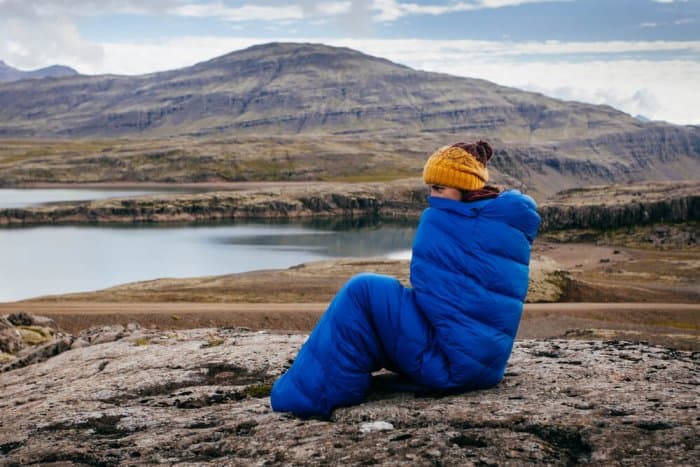
Disadvantages of Tent Camping in Iceland
The disadvantage of this type of camping, especially in Iceland, is the weather. Iceland is windy, and depending on the time of the year, it can also be cold, rainy, snowy, or even have hail. These aren’t exactly ideal conditions for setting up camp and sleeping outside. One of our readers commented that her friend told her she was crazy to go camping in Iceland because it would be so windy that she wouldn’t be able to keep the tent on the ground. While this is an extreme scenario, you should take certain precautions such as pitching your tent by a wall, a hill, a tree, or something similar in case it gets very windy. Also, have a backup plan (like your vehicle) in the event of a really strong storm.
Camping With a Campervan
Renting a campervan is a good midway point between tent camping and motorhome camping. You’ve got the benefits of taking your vehicle with you and having shelter in case weather conditions get really bad. You can also carry tents and other camping equipment along should you decide to spend the night outdoors. You truly have the best of both worlds. While it’s true that you won’t be able to take your campervan deep out into the woods, you can still get a pretty outdoorsy experience nonetheless.
What about amenities? Should you plan on eating more than beans out of a can or roasting anything other than hot dogs and s’mores over a campfire, you’ll still need to carry your own stove (just like with traditional camping). While many campsites will have outlets and charging stations and some even have wifi, as a general rule it’s best to bring your own if there’s something you really need during your camping trip. Campervans are retrofitted with sleeping accommodation and most have overnight heaters. You’ll be able to sleep in them and spend the rest of your time exploring the great outdoors.
Motorhome Camping
Is motorhome camping really camping? Some hardline traditionalists might scoff, roll their eyes in disgust and angrily say “No! And neither is glamping!” but we here at Camping Iceland think people should be free to do what they want, without criticism, scorn or judgement. So glamp away if that’s your thing!
Proponents of RV camping appreciate being able to combine the joys of being outdoors and proximity to nature with having a hot shower, fridge, bathroom and a fully functional stove close by. Not everyone wants to hike an hour to the top of a mountain before pitching a tent and setting up camp for the night. Some prefer to pull into the campsite, crack open a cold beer from the cooler and just relax.
RV camping is usually more popular among the older set or those with families. Their kids would probably whine the whole time anyway about lack of cell service or not being able to charge their devices. And sometimes you just want a comfortable bed and little luxury. Is that really so bad?
Unfortunately, these types of vehicles are limited in terms of where they can go, so access to the wilderness will be restricted to the ground you can cover on foot. And technically, this isn’t really considered “camping” as you are cut off from the elements when you stay inside your vehicle. But that’s perfectly fine! If you prefer the comfort of a motorhome, we say more power to you. We all need to do what makes us happy.

Iceland’s Mountain Huts and Cabins
This is a unique type of camping in Iceland. In the mountains and the highlands of Iceland, there are mountain huts where you can stay along hiking trails and less inhabited areas. They are generally dormitory-style sleeping arrangements and you’ll need to either rent a sleeping bag or provide your own. Learn more and see a map of mountain hut locations in Iceland by visiting this website: https://www.nat.is/mountain-huts-in-iceland/.
The 4 Types of Camping in Iceland
In the end, the most important thing is to choose the way of camping that works for you. Take your personal tastes, individual preferences, and trip budget into account when deciding. Our next article will cover all of the essentials that you need to bring on your camping trip to make sure you don’t forget anything. Have a great time and happy camping!
